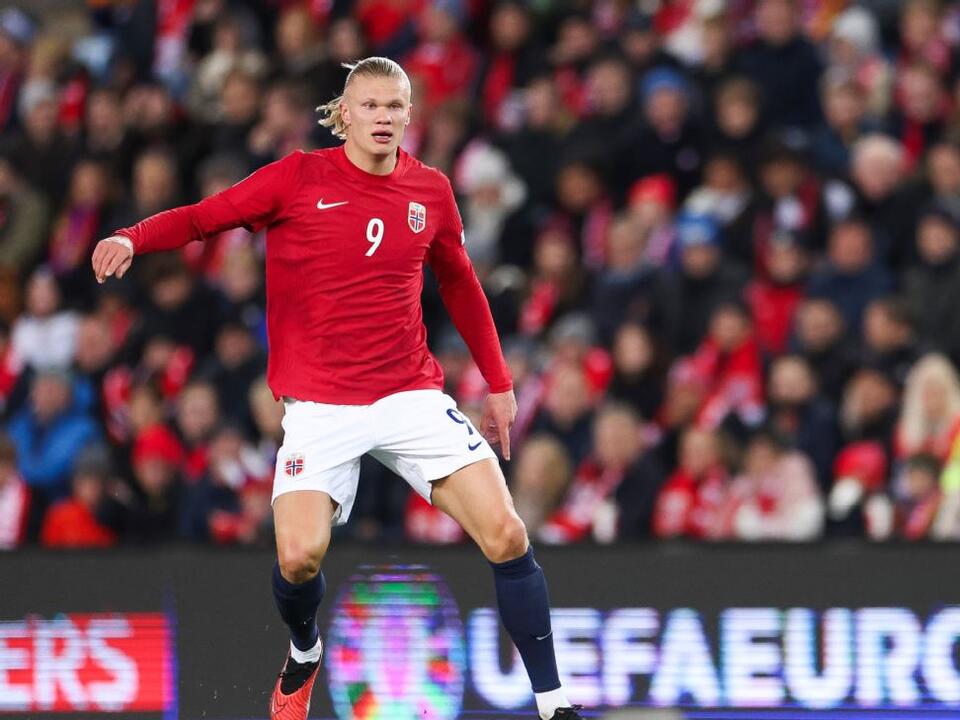Physical Address
304 North Cardinal St.
Dorchester Center, MA 02124
Physical Address
304 North Cardinal St.
Dorchester Center, MA 02124

Norway’s men’s football team recently underwent a routine anti-doping inspection, a common practice in the sport. However, this particular incident drew attention due to the surprising names included on the testing list.
Among the players scheduled for urine tests was Erling Haaland of Manchester City, a current star of Norwegian football. Yet, the list also mentioned two renowned figures from the sport’s history: Jorgen Juve and Einar Gundersen, both of whom are no longer alive. Juve passed away in 1983, while Gundersen died in 1962.
Norway’s manager, Stale Solbakken, confirmed this unusual occurrence on Wednesday. “We had a visit from Anti-Doping Norway on Tuesday,” he stated. “The following players were selected for testing: Erling Braut Haaland, Jørgen Strand Larsen, Antonio Nusa, Oscar Bobb, Einar Gundersen, and Jorgen Juve.” His remarks highlighted the bizarre nature of the list, particularly noting the inclusion of historical players.
Solbakken continued with a tone of disbelief, saying, “Then I start to wonder. These were the names that were read out, and it was serious. So we had to call Anti-Doping Norway and ask, ‘Is there a hidden camera?’ So Einar Gundersen and Jorgen Juve were summoned. It was a bit late. Negative tests on both of them.” This light-hearted remark reflected the surprise and confusion that the situation caused among the team.
It’s notable that although Haaland and Larsen were present for testing, Oscar Bobb was absent due to an injury. The 21-year-old is sidelined for three months with a broken leg, underscoring the diverse circumstances of the players on the roster.
The legacies of Gundersen and Juve in Norwegian football are significant, as both contributed to the national team’s history. Juve, who played from 1928 to 1937, managed to score 33 goals during his tenure. Meanwhile, Gundersen left his mark on the team by netting 26 goals between 1917 and 1928, cementing their places in the annals of the sport.
In response to the incident, Halvor Byfuglien, the communications director for Anti-Doping Norway, acknowledged the oversight in an interview with a local newspaper. “It’s hard to say what happened, but normally we hit the target better,” he admitted. He went on to add, “All we can do now is admit we’re wrong. We can joke about it in the office today and then review our routines going forward.” This commentary reflects a sense of accountability that the agency is prepared to uphold following the mix-up.
With the inclusion of two deceased players on the testing list, lively discussions erupted about the procedures used within anti-doping practices. This incident has prompted discussions around the accuracy of participant selections and the need for refined protocols to prevent such errors in the future. The focus now shifts to ensuring that testing procedures are updated to avoid any unlikely scenarios like this one.
In conclusion, while the Scandinavian nation continues to highlight its commitment to fair play and athlete integrity, this humorous mishap serves as a reminder that even routine processes can sometimes yield unexpected results. The engagement from both the team management and the anti-doping agency indicates a shared goal of enhancing the reliability of future practices. Nonetheless, the inclusion of Gundersen and Juve reinforces the lasting impact these players have had on Norway’s football narrative, even as the sport evolves in modern times.
Source: Particlenews



